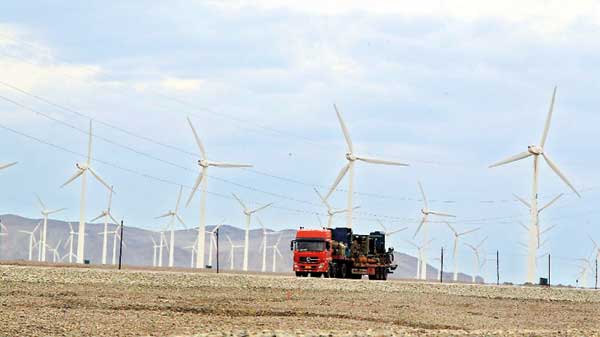Reply To:
Name - Reply Comment

Asia is expected to become the largest energy consuming region in the world well before 2050.
At the same time, developing Asia’s share of worldwide energy-related CO2 emissions has more than doubled from 17 percent in 1990 to 37 percent in 2011, and without a change in current energy use patterns, is expected to rise to 46 percent by 2035. The region must also deal with the vital ‘unfinished business’ of providing electricity to around 600 million people who still lack it.
The public and private sectors, along with donor agencies including the Asian Development Bank, are responding to these challenges in a number of ways including scaling up the use of energy from clean, renewable sources and using power more efficiently.
China leads
After a period of decline, due in part to uncertainty over incentive policies in Europe and the US and reductions in support in some countries, clean energy investments rebounded in 2014, with $270 billion invested globally and a record 95 gigawatts of renewable energy capacity installed. The People’s Republic of China (PRC) remained the top overall destination, attracting over $83 billion in investments. In developing Asia, Indonesia attracted more than a billion dollars of investment in renewables and the renewable energy sectors of the Philippines and Myanmar saw investments in the $500 million range.
“These investments occurred during a time of lowering oil prices, so while most countries in Asia are benefiting from the price drop they are also aware that it cannot last forever and are investing in more sustainable and clean sources of energy for the future,” said Yongping Zhai, Technical Advisor (Energy) of ADB, “This process is also being driven by the steady decrease in technology costs for renewables which is particularly important for developing countries where clean energy investment was once viewed as financially unviable.”
The PRC, the world’s second largest economy as measured by nominal GDP, has pledged to cut its CO2 emission intensity by 40%-50% from 2005 levels by 2020, and to peak its GHG emissions around 2030. Its investments in renewable energy have grown more than eightfold from $10 billion in 2006 to $83 billion in 2014, and in 2012 it invested more in clean energy than the US.
In India, the seventh largest economy in the world, policymakers have been moving to tap the country’s vast solar resources. In May 2015 a 100-megawatt concentrated solar plant in Rajasthan state became fully operational – the biggest of its kind in Asia. The plant is supported by ADB financing. India’s solar power capacity has risen from 161 megawatts in 2010 to 3.7 gigawatts in March 2015, with its total renewable energy investments rising from 4.7 billion in 2006 to $7.4 billion in 2014.
ADB initiative
From 2011 to 2014 ADB’s clean energy investments exceeded $2 billion annually, reaching $2.4 billion in 2014 —the highest level ever—with nearly a third of the amount supporting private sector projects. Approved climate financing over the same period averaged $3 billion a year, with about 75 percent earmarked for climate change mitigation and 25 percent for adaptation measures. Support to help countries ‘climate proof’ or adapt to the impacts of climate change is now an integral part of ADB operations. This is as true for energy projects as others since hydropower plants, for example, need to be ready to cope with changes in water flows, pylons need to be able to withstand higher winds, and buried electrical wires to be ready to cope with floodwaters.
Power savings
Energy efficiency is another crucial area in which countries can make power savings. ADB studies show that efficiency investments in the demand side equivalent to 1-4 percent of energy sector spending could meet as much as 25 percent of the projected increase in primary energy consumption in developing Asia.
ADB’s energy efficiency investments reached $900 million alone in 2014 and between 2010 and 2013, projects supported under its Energy Efficiency Initiative have resulted in 3 gigawatt-hours equivalent in energy savings per year.
All these measures are helping economies in the region respond to the threat of climate change while ensuring they remain energy secure and on a sustainable growth path. The Paris climate change summit in December will be the global acid test for seeing how far Asia and the Pacific and the rest of the world are prepared to go to avert potential climate disaster.
(ADB)